Family : Blenniidae

Text © Giuseppe Mazza

English translation by Mario Beltramini
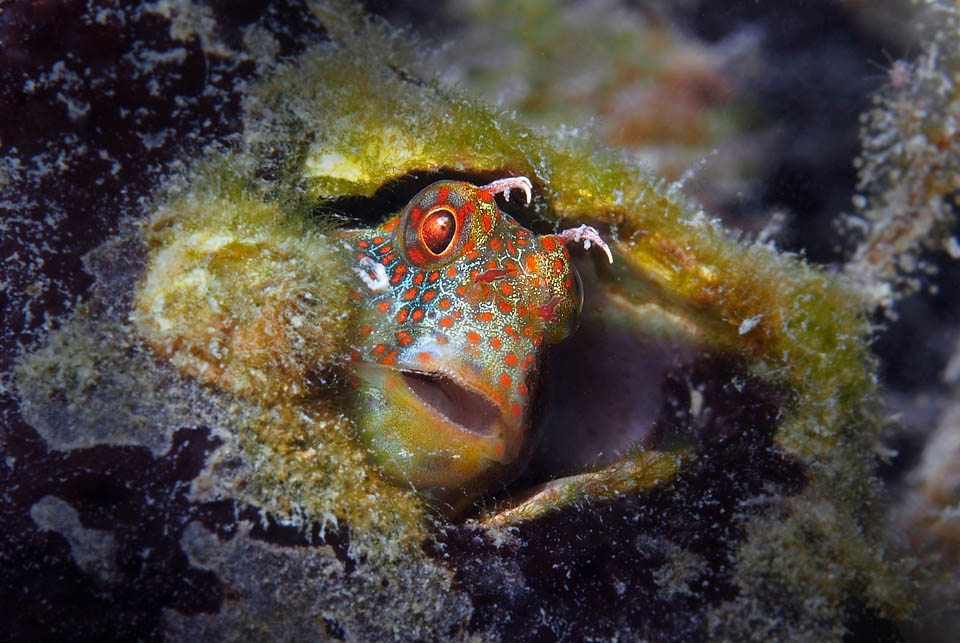
The Tessellated blenny (Hypsoblennius invemar) is frequent along the West Atlantic coasts from Louisiana to Brazil © Pauline Walsh Jacobson
The Tessellated blenny, Hypsoblennius invemar Smith-Vaniz&Acero P., 1980, belongs to the class of the
Actinopterygii, the ray-finned fishes, to the order of the Blenniiformes and to the family of the Blenniidae, one of the riches in the marine world, counting 59 genera and more than 400 species, present in the tropical and temperate seas, and sometimes, rarely, in fresh and brackish waters.
The name of the genus Hypsoblennius, originates from the Greek “hypso-“, high, with unexplained reference by Gill who created it in 1861, “blennios”, mucus, because these scaleless fishes have a protecting mucus that allows them not to get hurt when entering or exiting quickly from their narrow holes.
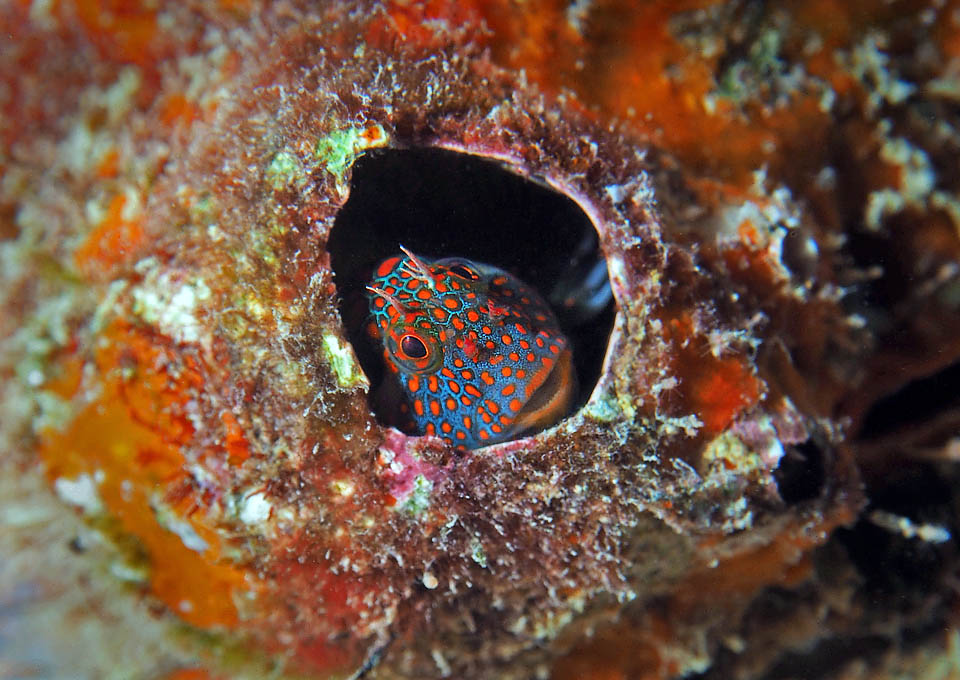
It lives in empty shells covered by weeds and encrusting sponges, of Megabalanus tintinnabulum: a giant barnacle forming cluster colonies at low depths © Pauline Walsh Jacobson
Conversely, the specific term invemar is the acronym of Investigaciones Marinas, created to honour the Instituto de Investigaciones Marinas de Punta de Betin in Santa Marta, Colombia.
Zoogeography
Hypsoblennius invemar is frequent along the coasts of the West Atlantic coasts from Louisiana and the northern Gulf of Mexico up to Rio de Janeiro. Among other things, it seems that it is native to Brazil and that from here it has colonized the Caribbean, carried in the barnacle shells encrusting the keel of ships and with larvae contained in the ballast waters of those used in the oil industry.
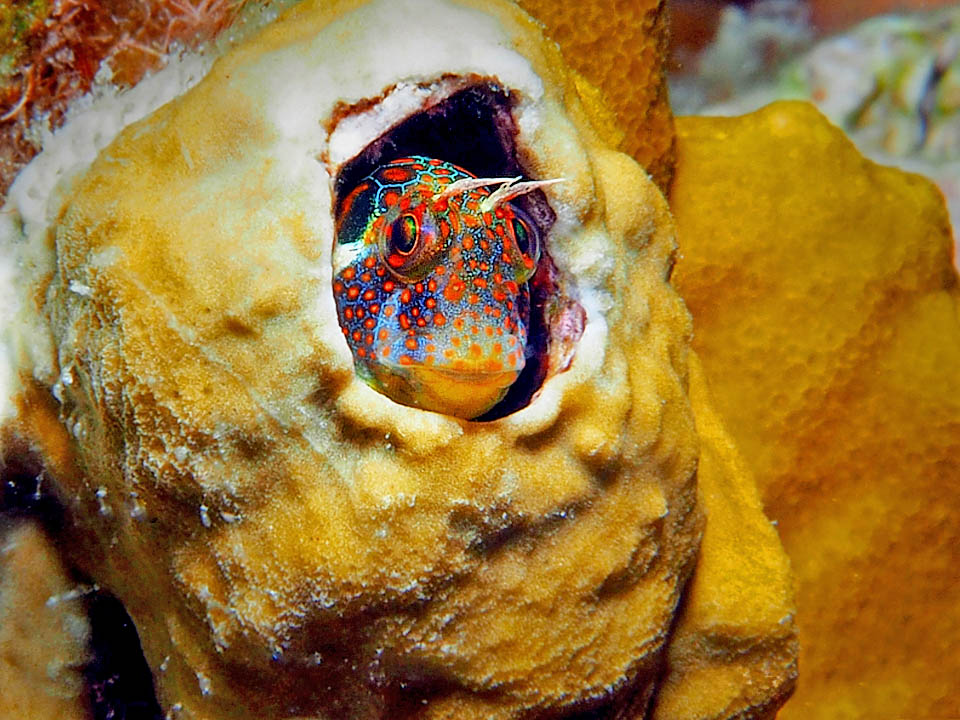
These old shells, 6,5 cm broad with opening above, are the ideal shelter of the Tessellated blenny who doesn’t exceed 5,8 cm © Pauline Walsh Jacobson
Ecology-Habitat
As a matter of fact, Hypsoblennius invemar lives in the empty dead shells covered by weeds and encrusting sponges of a big cirriped, the Megabalanus tintinnabulum, so called because it grows in clusters looking like conical or barrel-shaped tinkling handbells. They are about 5 cm tall and 6,5 cm broad: an ideal shelter for the Tessellated blenny who does not exceed the length of 5,8 cm.
Thus these small fishes live one next to the other, shell to shell, in real condos, large structures that have formed over time stuck to ships, jetties, buoy chains and oil rigs.
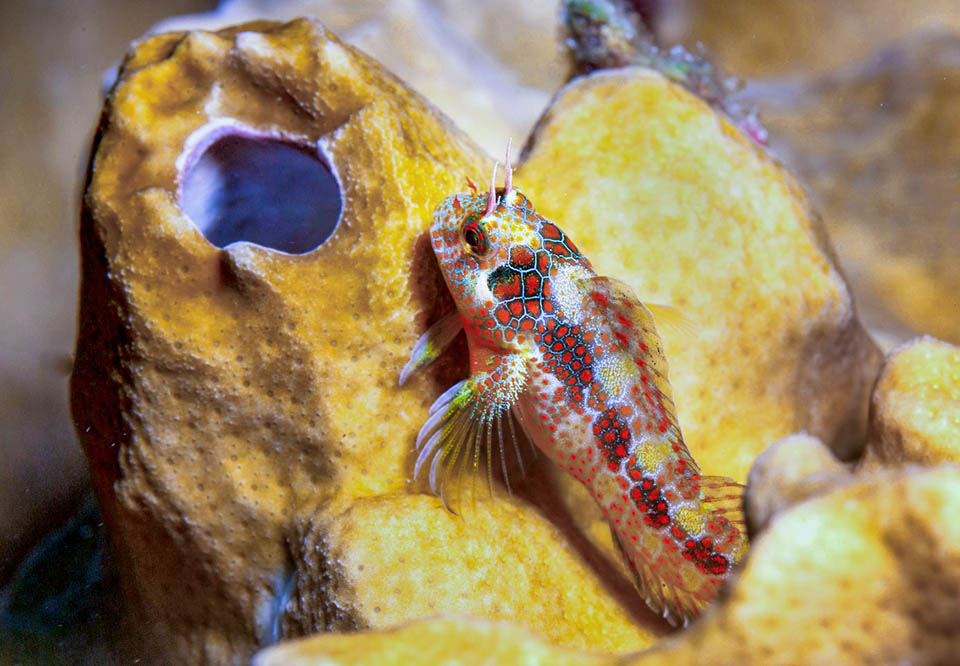
Here one out in the open, among the elements of the dead colony of crustaceans that has transformed in a condo © Allison & Carlos Estape
The Tessellated blenny can’t do without these small dwellings and live so, demersal, at 1-5 m of depth, where these barnacles do live, but is found also in lower waters and has been exceptionally seen at 24 m.
Morphophysiology
Hypsoblennius invemar presents a tapered body with short and robust head with a decidedly steep front profile. We note a showy cirrus with 4 ramifications over the eye and another one ramified close to the nostrils. The jaws display rows of small blunt and flattened teeth, arranged like a comb, for catching the small invertebrates they feed on.
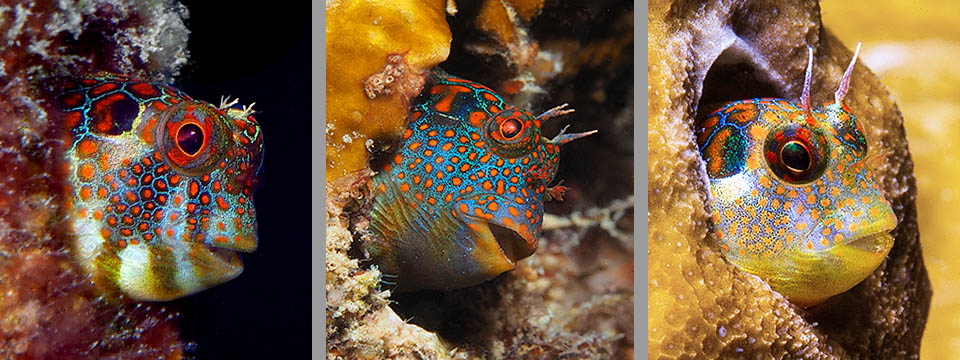
Spectacular color variations of three Hypsoblennius invemar cautiously peeking at the door of the house in the hope of safely preying on small invertebrates passing by © Pauline Walsh Jacobson – Pauline Walsh Jacobson – Allison & Carlos Estape
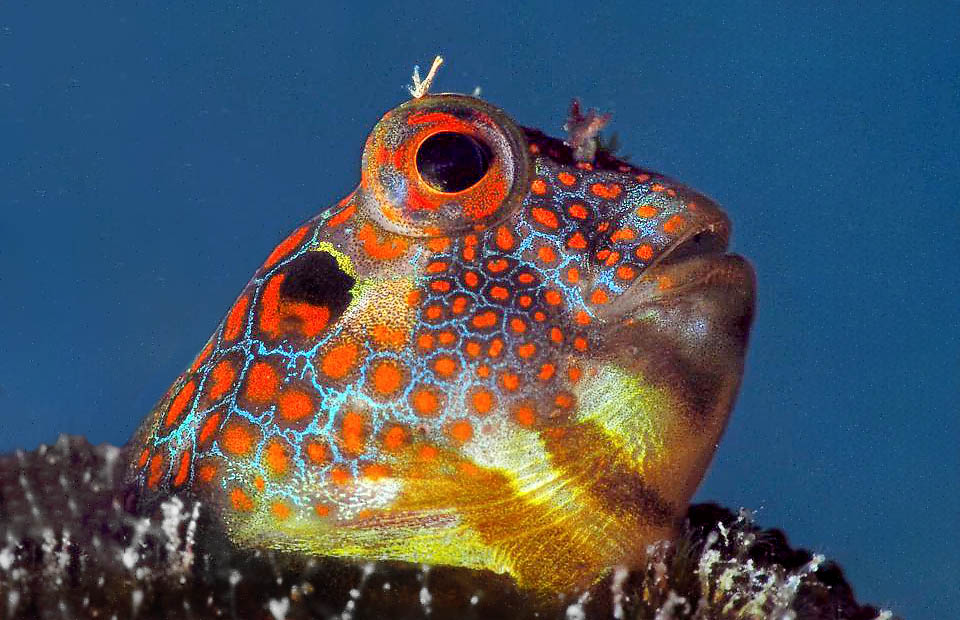
This colourful species is easily distinguished from other similar for the quaint livery and the typical black dot just behind the eye © Pauline Walsh Jacobson
The gill opening, poorly visible due to the fusion of the operculum with the throat, extends towards the belly from the first ray on the ventral side of the pectoral fin.
The long dorsal fin presents a slight indent between 11-13 spiny rays and 11-12 soft ones. The anal has 2 spiny rays and 14 unarmed, the pectoral ones have 14 soft rays and the pelvic 1 spiny ray and 4 unarmed. Finally, the caudal is more or less truncated.
The colourful livery, with variants on a pale brown or greenish blue background, displays, especially on the head and the fore part of the body orange red spots and polygons, separated by thin blue lines.
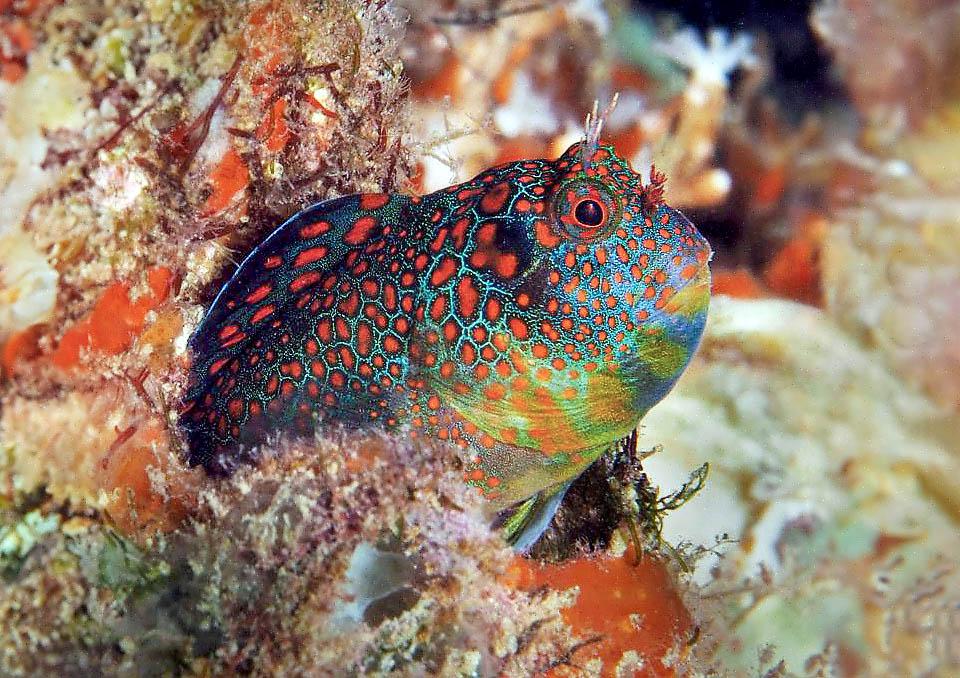
To seduce a partner, livery apart, the males must before clean to mirror their accomodation to welcome the eggs they will survey then ventilating them up to hatching © Pauline Walsh Jacobson
Characteristic is the black dot, well visible in the adults, just behind the eye.
Ethology-Reproductive Biology
The males of Hypsoblennius invemar certainly have no difficulty in finding a partner in their crowded condo, but before courting the chosen one they do thorough house cleaning, because even the most naive of the females knows that the food residues and wastes cause mold in the eggs.
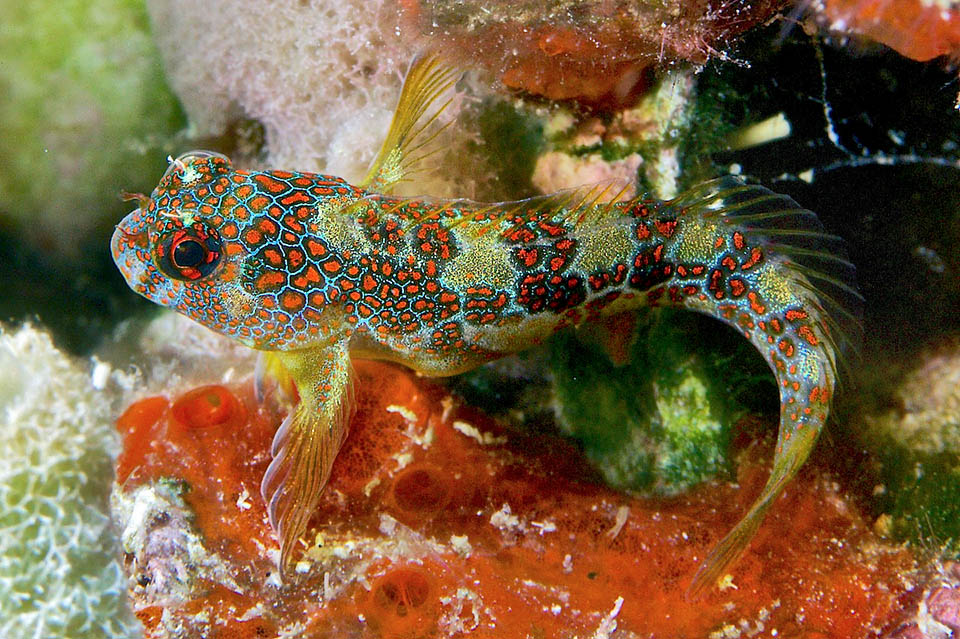
A juvenile. The resilience of Hypsoblennius invemar is excellent, the fishing vulnerability very low, and so the Tessellated blenny is not an endangered species © Allison & Carlos Estape
In fact these ones are glued with an adhesive pad or a pecidel inside the barnacle, where, after the fecundation, the male will protect them from the intruders, ventilating them for good oxygenation until hatching. The larvae, planktonic, are then dispersed by the currents.
The resilience of Hypsoblennius invemar is excellent, with a possible doubling of the populations in less than 15 months, and the fishing vulnerability, very low, marks only 10 on a scale of 100. Therefore, from 2007 it appears as “LC, Least Concern” in the IUCN Red List of the endangered species.
→ For general information about FISH please click here.
→ For general information about BONY FISH please click here
→ For general information about CARTILAGINOUS FISH please click here.
→ To appreciate the BIODIVERSITY of BONY FISH please click here.
→ To appreciate the BIODIVERSITY of CARTILAGINOUS FISH please click here.
